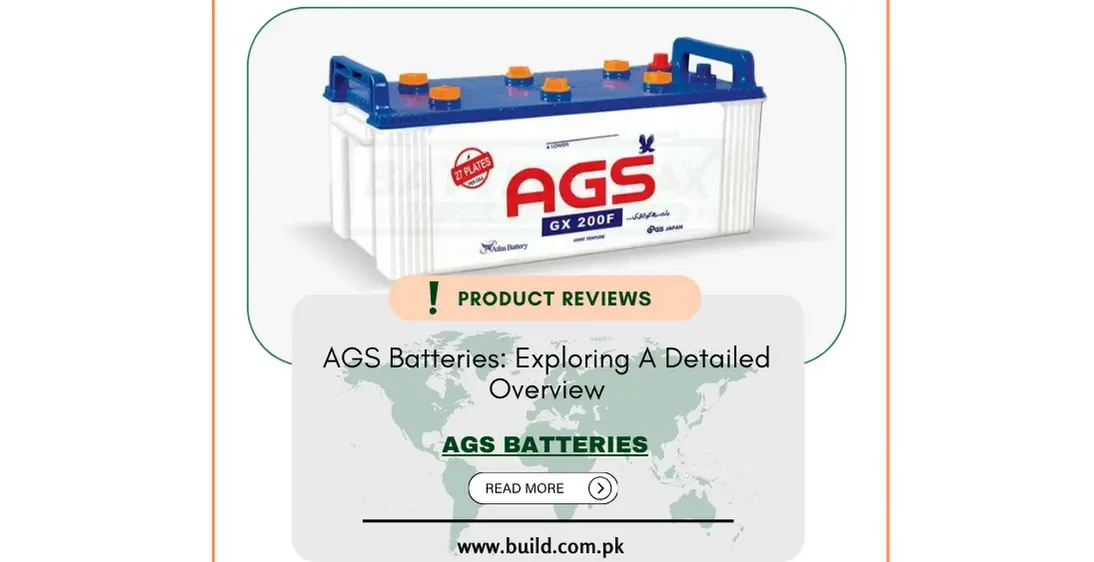AGS Batteries: Exploring A Detailed Overview

Introduction:
AGS
batteries, also known as Absorbent Glass Mat batteries, are a type of sealed
lead-acid battery that uses a unique design to offer superior performance and
durability. These batteries are commonly used in a wide range of applications,
including automotive, marine, renewable energy systems, telecommunications, and
backup power systems. AGM batteries have gained popularity due to their
maintenance-free operation, reliability, and ability to withstand deep
discharge cycles without significant loss of capacity.
Construction and Working Principle
AGM
batteries feature a unique construction that sets them apart from traditional
flooded lead-acid batteries. The key components of an AGM battery include:
Absorbent Glass Mat Separator:
The separator is made of glass fibers that are woven into
a mat-like structure. This separator is designed to hold the electrolyte
(sulfuric acid) in close proximity to the battery plates while preventing
spills or leaks, even if the battery case is damaged.
Lead Plates:
AGM batteries contain lead plates (positive and negative) immersed in
electrolyte absorbed by the glass mat separator. These lead plates are
specially designed to maximize surface area, allowing for efficient electron
flow during charging and discharging cycles.
Electrolyte:
The electrolyte in AGM batteries is sulfuric acid diluted with water, absorbed
within the glass mat separator. This electrolyte facilitates the chemical
reactions necessary for the battery to generate and store electrical energy.
Benefits of AGS Batteries
AGM
batteries offer several advantages over traditional flooded lead-acid
batteries, making them a preferred choice for various applications:
Maintenance-Free Operation:
AGM batteries are sealed and do not require regular maintenance such
as topping up electrolyte levels. This makes them ideal for applications where
access for maintenance is limited.
Vibration Resistance:
The glass mat separator in AGM batteries provides excellent
resistance to vibrations, making them suitable for use in vehicles, boats, and
off-grid renewable energy systems.
Fast Charge Acceptance:
AGM batteries can accept high charging currents, allowing
for faster recharge times compared to flooded lead-acid batteries.
Deep Discharge Capability:
AGM batteries are designed to withstand deep discharge
cycles without significant loss of capacity, making them ideal for use in
backup power systems and renewable energy applications.
Spill-Proof Design:
The sealed design of AGM batteries prevents electrolyte spills, making
them safe to use in confined spaces or applications where leakage could pose a
risk.
Applications of AGS Batteries
AGM
batteries find widespread use in various industries and applications due to
their versatile performance and reliability. Some common applications of AGM
batteries include:
Automotive:
AGM batteries are used as starting batteries in vehicles equipped with
start-stop technology due to their ability to handle frequent deep discharges
and rapid recharging.
Marine:
AGM batteries are popular for marine applications such as powering trolling
motors, navigation equipment, and onboard electronics. Their sealed design and
resistance to vibration make them ideal for use on boats and yachts.
Renewable Energy Systems:
AGM batteries are used in off-grid and grid-tied renewable
energy systems, including solar photovoltaic (PV) and wind power installations.
They store excess energy generated by renewable sources for use during periods
of low production or high demand.
Telecommunications:
AGM batteries provide reliable backup power for telecommunications
infrastructure, ensuring uninterrupted communication services during power
outages or grid failures.
UPS:
AGM batteries are used in UPS systems to
provide backup power to critical equipment such as computers, servers, and
network devices in the event of a power outage.
Considerations When Choosing AGS Batteries
When
selecting AGM batteries for a specific application, consider the following
factors:
- Battery Capacity: Choose a battery with sufficient capacity (expressed in ampere-hours, Ah) to meet the energy requirements of the application.
- Voltage Rating: Ensure that the battery voltage matches the requirements of the equipment or system it will power.
- Cycle Life: Check the expected cycle life of the AGM battery, which indicates how many charge-discharge cycles the battery can withstand before its capacity begins to degrade.
- Operating Temperature Range: Consider the temperature range in which the battery will operate to ensure optimal performance and longevity.
- Brand
Reputation: Choose AGM batteries from reputable manufacturers known for quality
and reliability to ensure long-term performance and warranty support.
Conclusion:
In conclusion, AGS batteries offer a compelling solution for applications that demand high performance, reliability, and maintenance-free operation. With their unique design and versatile applications, AGS batteries continue to be a preferred choice across automotive, marine, renewable energy, telecommunications, and backup power systems. By understanding the benefits and considerations associated with AGS batteries, users can harness the power of this advanced battery technology to meet their energy storage and delivery needs effectively.









